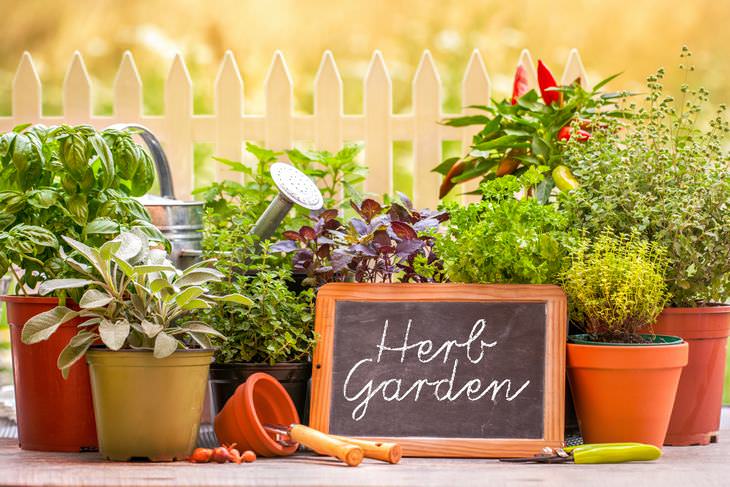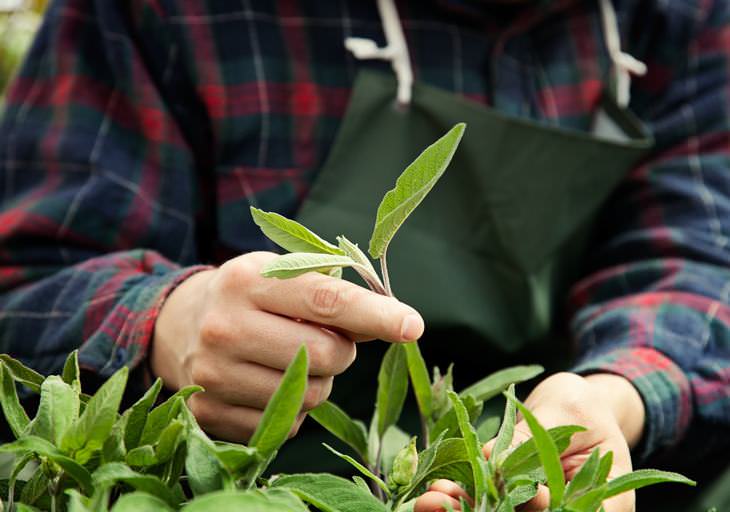

1. Choose the location carefully
When growing a herb garden, location is very important. The plants should have plenty of sunlight and should be accessible for frequent harvesting. Be sure to look into the types of herbs you'd like to grow and note their growing conditions. Some herbs like it cool and dry, while others thrive better in warmth and moisture. Some like full sun, but others prefer partial shade. Group your herbs together according to their needs. An alternative could be to plant on slopes where herbs with low water needs occupy higher ground than those needing extra moisture, which can be planted at the bottom.
2. Start with good quality plants
Herbs can be started from seeds, from cuttings taken from established plants, or from divisions of larger clumps. Whatever your source, the plants you start with should be healthy and strong. Bear in mind that weak seedlings and pot-bound herbs find it hard to thrive when you transplant them to the herb garden. Different herbs grow best using different methods. Some are best grown from seeds, however, some, like chives, offer better results when started from divisions of clumps. Basil plants grown from cuttings are good for a windowsill herb garden, though they don't quite measure up to their seed-grown counterparts. Seedlings also tend to grow fast and vigorous, they branch out in every direction to form good-sized plants. On the other hand, herbs like cilantro, dill, and parsley are best grown from seeds and peppermints, spearmints and rosemary are best grown from rooted cuttings.
3. Harvest frequently
These cut-and-come-again plants need frequent harvesting. The ones with branching habits tend to become bushier as you pick their tips since new branches would rise from the nodes below. The nodes of basil and mint, for instance, may send out two branches in opposite directions when the tips are pinched off. Meanwhile, non-branching herbs like cilantro can be harvested by snipping off regularly to get a continuous supply from the same plant.

4. Feed with a nitrogen-rich fertilizer
Frequent harvesting keeps the plant in a vegetative growth mode. But as herbs grow new branches and leaves, it quickly depletes the nutrient stores of the plant. As a result, we need to feed the herbs regularly to make up for the deficit. Nitrogen is the main macro element that promotes leaf growth, and feeding the plants with high-nitrogen fertilizers helps. If you'd prefer to avoid chemical fertilizers in your herb garden, top dressing with compost is another option. Compost tea is a plant tonic rich in nitrogen compounds.
5. Provide partial shade
Herbs generally need plenty of sunlight to thrive, but too much of it can be a bad thing, especially for herbs like basil, chives, mint, catnip, and parsley. When you plan your herb garden, be sure to position the beds according to the amount of light they receive during the day. Be sure to arrange the beds in such a way that the shadow of taller plants falls on the small ones in the afternoon. Herbs generally don't do well under trees which tend to cast heavy shade. But if a tall overhead tree allows dappled light, they should be okay throughout the summer months.
6. Give an occasional hard pruning
Alongside frequent harvesting, be sure to give herb bushes a thorough pruning to help maintain youthfulness. You can use a pair of garden shears to cut down the top growth by half or one-third. This may expose woody, leafless stems that look unsightly. However, new growth will soon cover the bushes, giving them new life. Hard pruning is recommended for herbs like oregano, sage, peppermint, and rosemary.